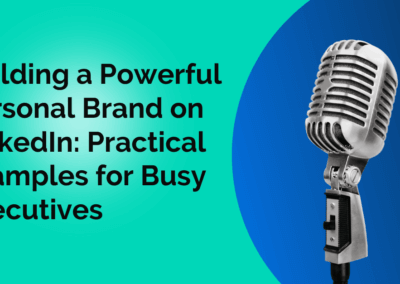Writing a B2B case study can seem like a daunting task. The title ‘case study’ infers hours upon hours of research to create a big, thick document of dry information in the end. While that may have been the case back in the day, it’s a much quicker, exciting process now — that is, if you do it effectively.
Why You Should Prioritize More Case Studies
A survey from the Content Marketing Institute found that the most important marketing tactics for B2B companies are in-person events, webinars, and case studies.
If you want to ensure they get the memo that you’re the one they should do business with, your successes must be easy to find – and in as few places as possible. You don’t want to leave a trail of success breadcrumbs scattered around the internet in the hopes that future business will follow it.
Development company Devrix suggests making your case studies visible on your website, even on your main navigation menu. You might be asking, “Can’t I just include them in my blog?” Or, “Why dedicate a whole page to case studies?” There are a couple of answers to those questions.
- You could include your case studies in your blog, but they aren’t really blogs. Your blog likely consists of industry news and how-to posts, acting as a catch-all. Your case studies serve the purpose of being all about work your company has done. So let them stand out!
- You might be hesitant to dedicate a whole page to your case studies because you still think a case study is a bulky project that nobody outside of your organization will want to read. However, it’s common now to use a case study to focus on a single takeaway or two. If you have more that you want to write about — you probably do — then you write more case studies.
B2B Case Study Etiquette
The most important thing to keep in mind about your case study is that the success outlined is attributed to the customer. Not you. Use case studies as a platform for your customers’ successes, not an excuse to show off how you helped get them there.
Involve Your Customers
There are a few ways to obtain the necessary information you need from your client. But a lot of it depends on how hands-on and responsive they are. Some clients like to be kept in the loop and want to be involved in any projects you’re working on that concern them. Others prefer to talk to you only when you’re working on a project for them. If your client is more of the hands-on type, interview them either in person, over the phone, or via email.
If your client is a bit more reserved, you will want to ask for the materials you need before you get started. Then, send him or her a draft before continuing to make sure you’re on the right track before committing more time. Sending a draft ahead of time is also an excellent route to take if your case study contains any information that might be considered sensitive or confidential. A way to avoid getting too detailed without omitting necessary data is to use growth percentages instead of specific numbers.
What Should You Include?
Oh! Did you want to know the literal way to write your B2B case study? The format? Well, there are a few ways to do that, as long as you include all of these crucial aspects:
-
- A detailed headline: Don’t just use your client’s name. What project or results is your study actually about?
- The process you used: How did you solve this client’s problem? You’re not a magician. You can reveal your tricks.
- The results: Be as specific as the client allows you to be. Brag brag brag!
- Quotes: Try to get quotes from your client about the work that you did for him or her.
- Call to action: Allow anyone who’s reading to reach these same results by getting in contact with you. You don’t want them to have read the whole case study just to be confused about how to hire you!
If you need help getting started on writing an effective B2B case study, check out our free Smark Toolbox’s case study template.





